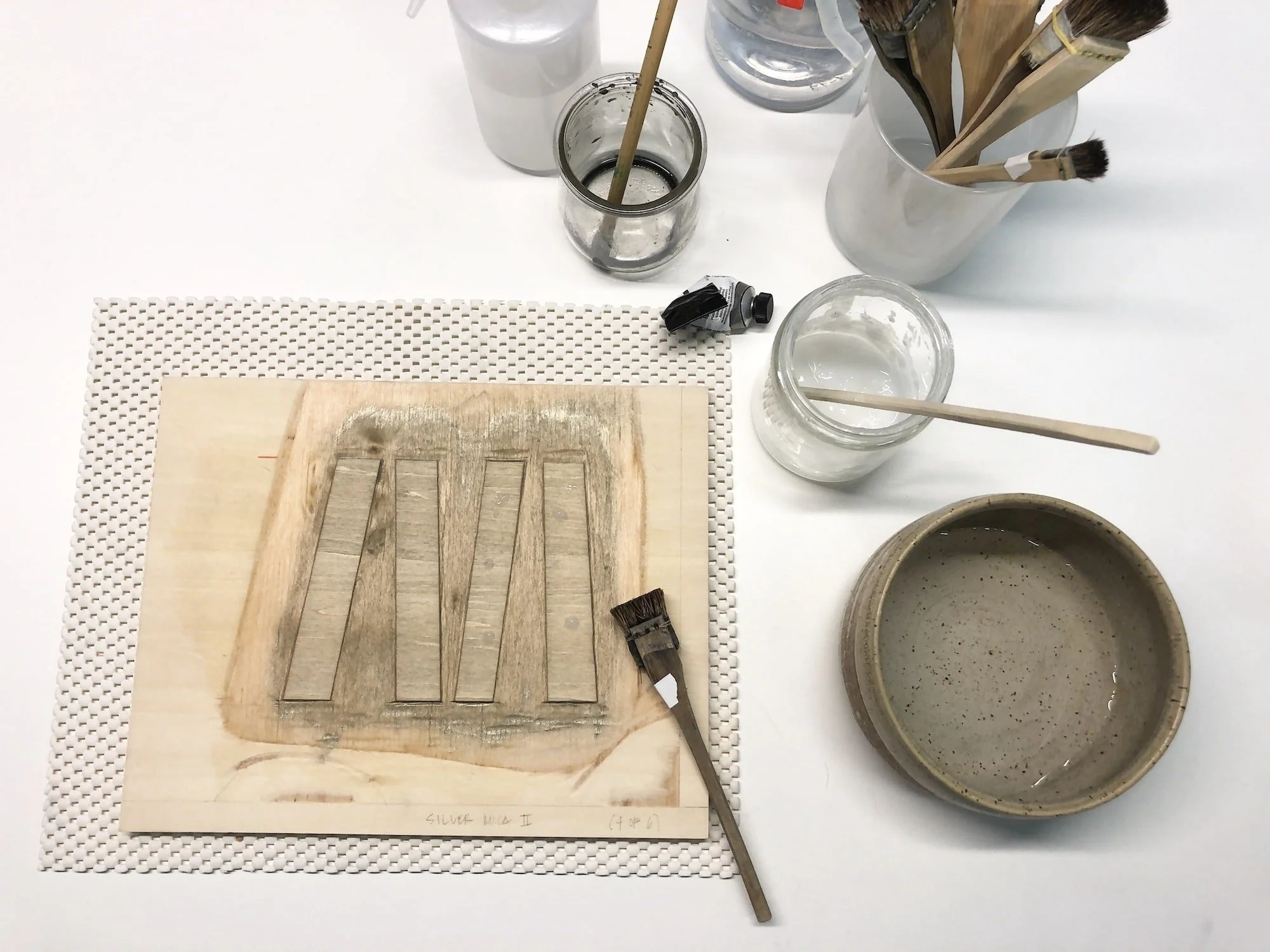mokuhanga
A Japanese water-based woodblock printing method in which prints are created entirely by hand with non-toxic materials.
final print
Here is the final print in a creamy, greige and charcoal palette. From the left, you can see how the overlapping bands progress in a wide, warm beige color that is highly textured [called gomazuri in Japanese, which means “sesame seed”], to medium-wide greige bands that are less textured than the thin, solid, dark bands on the right.
This is what I love about Mokuhanga, the almost ethereal transparency of the paint partnered with the ability to create texture with how much, or little, water and nori you use and how the prints can be as delicate or powerful as you want them to be.





